

Age: 27
Sex: female
Date: 6 Aug 1945
Place: Rich Street, Limehouse
Lilian Maud Hartney was found dead in Rich Street which was a small street off of East India Dock Road.
She was found lying stretched out on her back with her dress pulled up and private parts exposed. She had been strangled.
It was thought that she was killed somewhere else and then dumped there.
Her husband was tried for her murder but acquitted. He was arrested four months after her murder. Following her murder her husband was admitted to hospital and was described as gravely ill with lung trouble.
He was acquitted of her murder at the Old Bailey on 16 February 1946.
Lilian Hartney was found in the early hours of 6 August 1945 by a woman returning from a party. The woman said that she had passed the spot at about 1.45am on 6 August 1945 and said that there was no body in the gateway then. When she next passed the gateway at 3am she saw it, which gave a window of 75 minutes in which her body had been dumped there.
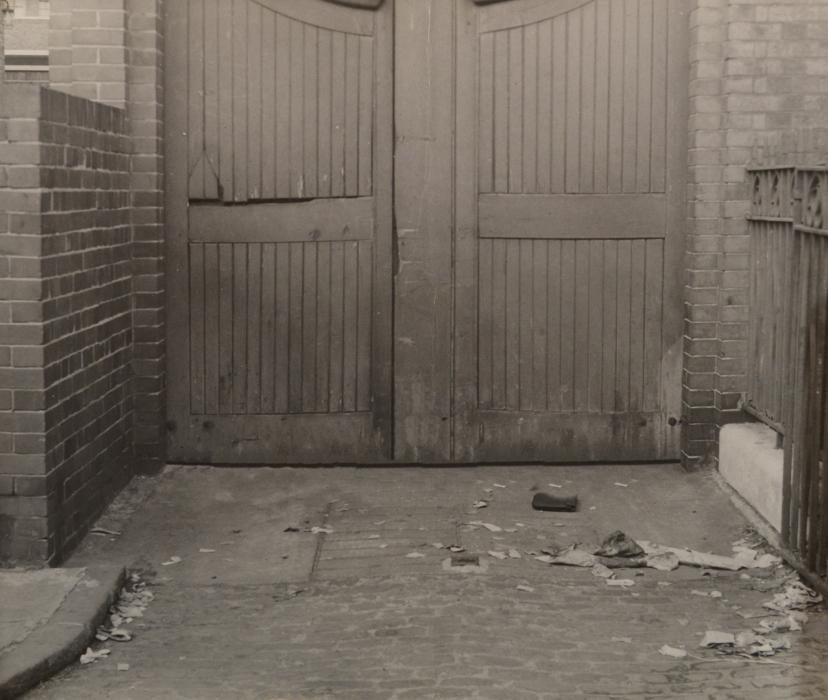
Rich Street was described as a narrow thoroughfare.
When doctors examined her body they found rope marks on her arms that had been made after she died. Experts said that the cord used would have been about the thickness and texture of a clothesline.
The evidence of the rope marks led the police to think that Lilian Hartney had been murdered in a near-by house. Lilian Hartney had lived about 250 yards away in East India Dock Road in a one roomed home with her husband.
Following the discovery of her body the police made house to house inquiries in the neighbourhood, with particular reference on lodgers that had left suddenly as well as for missing clothes lines.
Lilian Hartney's husband had been stationed at the Patrol Service Central Depot in Lowestoft which was called HMS Europa but on 2 July 1945 he was invalided out of the Navy suffering from Tuberculosis and given a temporary discharge and at the time of the murder was on indefinite leave awaiting his final discharge.
He said that on leaving the service he went to live at 32 East India Dock Road which was an apartment house kept by a woman where his wife had been occupying a bed sitting room on the first floor at the rear.
He said that he continued to live with her there and that after supper on the night of 5 August 1945 Lilian Hartney asked him if he was going with her to the open air concert in the park at East India Dock Road. He said that he told her that he didn't feel well enough to go and said that she told him that she would go alone.
He said that he then heard her go downstairs and speak to the married couple who occupied the room on the ground floor. He said that after a time he called Lilian Hartney and she came upstairs, and he told her that if she was going to the concert that she had better leave otherwise she would be late. He said that she told him that she intended to go to the concert and left the house at 8pm.
Lilian Hartney's husband said that he went to bed as soon as she left and noted that he woke several times in the night, at 10pm, 11pm and 1am on 6 August, 2am and again at 3.30am when he noticed that Lilian Hartney had not returned. However, he said that it didn't disturb him that she had not returned as she had done the same thing on other occasions.
He said that the police then called at 7.15am on 6 August 1945 and told him that a woman had been found dead and that he then went with them to Rich Street in West India Dock Road where he saw her body which he identified.
He said that he did not know the circumstances that brought about her death.
He said that he first met Lilian Hartney in the summer of 1940 at which time she was employed as a bed maker at the Navy House in Chatham and living with her parents in Great South Avenue, Chatham, Kent.
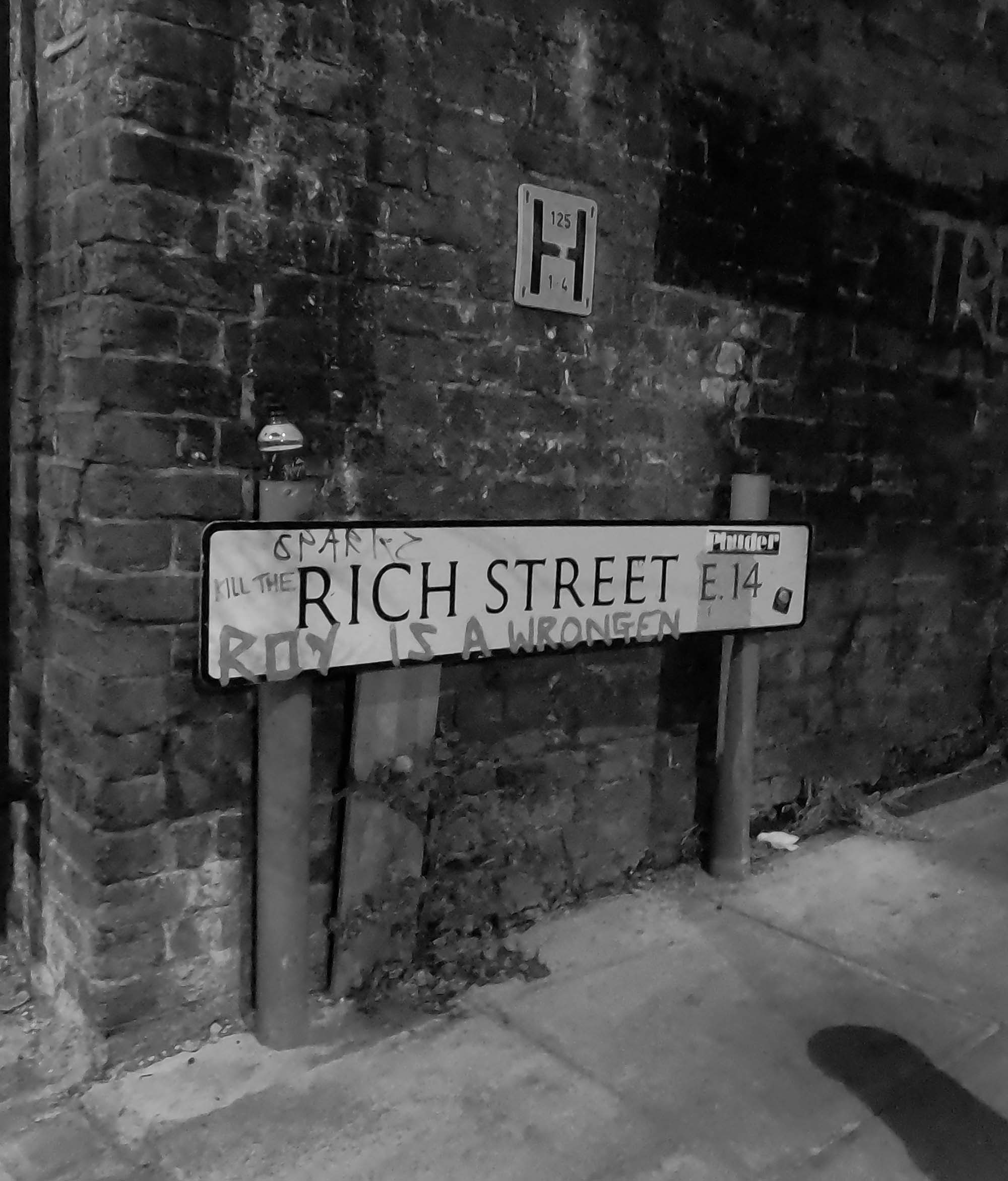
He said that Lilian Hartney didn't drink very much, but said that they occasionally went to the Kings Head public house in High Street, Chatham. He added that after she left the Sailors Home, Lilian Hartney obtained work as a welder at the Scientific Communications Co. in Meeting House Lane, Chatham at which time he was stationed at Chatham Dockyard and that he would meet her frequently.
He said that about March 1941 he transferred to Lowestoft and said that Lilian Hartney visited him there a number of times and that about June 1941, on one of her visits, she intimated that she had been carrying on with somebody else. He said that after she went back she wrote him a letter saying that she was in love with a supervisor who worked at her firm, the Scientific Communications Co. and sent him her engagement ring. However, he said that afterwards she wrote again and asked for it back and asked him to forgive her which he said he did. He added that he thought that it was over that matter that Lilian Hartney left Scientific Communications Co. and then remained at home and did housework. He said that after that Lilian Hartney started work for Cosmos Electric in Enfield and then went to work for the Royal Small Arms Factory in Enfield. He said that in 1944 she was working as a kitchen maid in the Balmoral Hotel near Balmoral Road in Gillingham.
Lilian Hartney's husband said that he went on leave in November 1944 and caused her to leave her employment at the Balmoral Hotel because she was working long hours and getting very little money and had become highly strung.
They married on 18 November 1944 at St Michaels Catholic Church in Chatham and when he returned from leave, she went to live with him at a boarding house at 17 Marine Parade in Lowestoft which was where he had been lodging before their marriage.
He said that Lilian Hartney then obtained work with the CWS in their canning factory in Oulton Road, Lowestoft but her health deteriorated and so he went to the employment exchange and obtained her release.
He said that some days later, about February 1945, Lilian Hartney went back to live with her parents at Chatham but visited him occasionally at Lowestoft.
Lilian Hartney's husband said that it was about March 1945 that he noticed by her letters that she was living at 32 East India Dock Road, E14 and said that when he wrote to her and asked her why she had moved from her parents address she told him that she had moved to London to get some work and that she was working at the Sanitas Company in Lockesley Road, E14. However, he said that she later wrote to him and told him that she had left that employment. He added that at that time he was a patient at Blundeston Royal Naval Auxiliary Hospital near Lowestoft.
He said that he received his discharge from the Navy about 2 July 1945 and sent Lilian Hartney a telegram saying that he would be arriving at Liverpool Street and asked her to meet him, however, he said that she didn't do so and was not at 32 East India Dock Road when he arrived there, and said that she didn't come in until midday the following day. He added that the telegram had not been opened and that Lilian Hartney had told him that she had been to Chatham to see her parents and didn't know that he was coming home.
Lilian Hartney's husband said that since that time they had been going out together doing shopping and occasionally went to the saloon bar of the Star in the East public house in Commercial Road. He added that she seldom went out alone.
He said that about a fortnight before her murder Lilian Hartney started work as a counter assistant at Pearks Stores in Burdett Road.
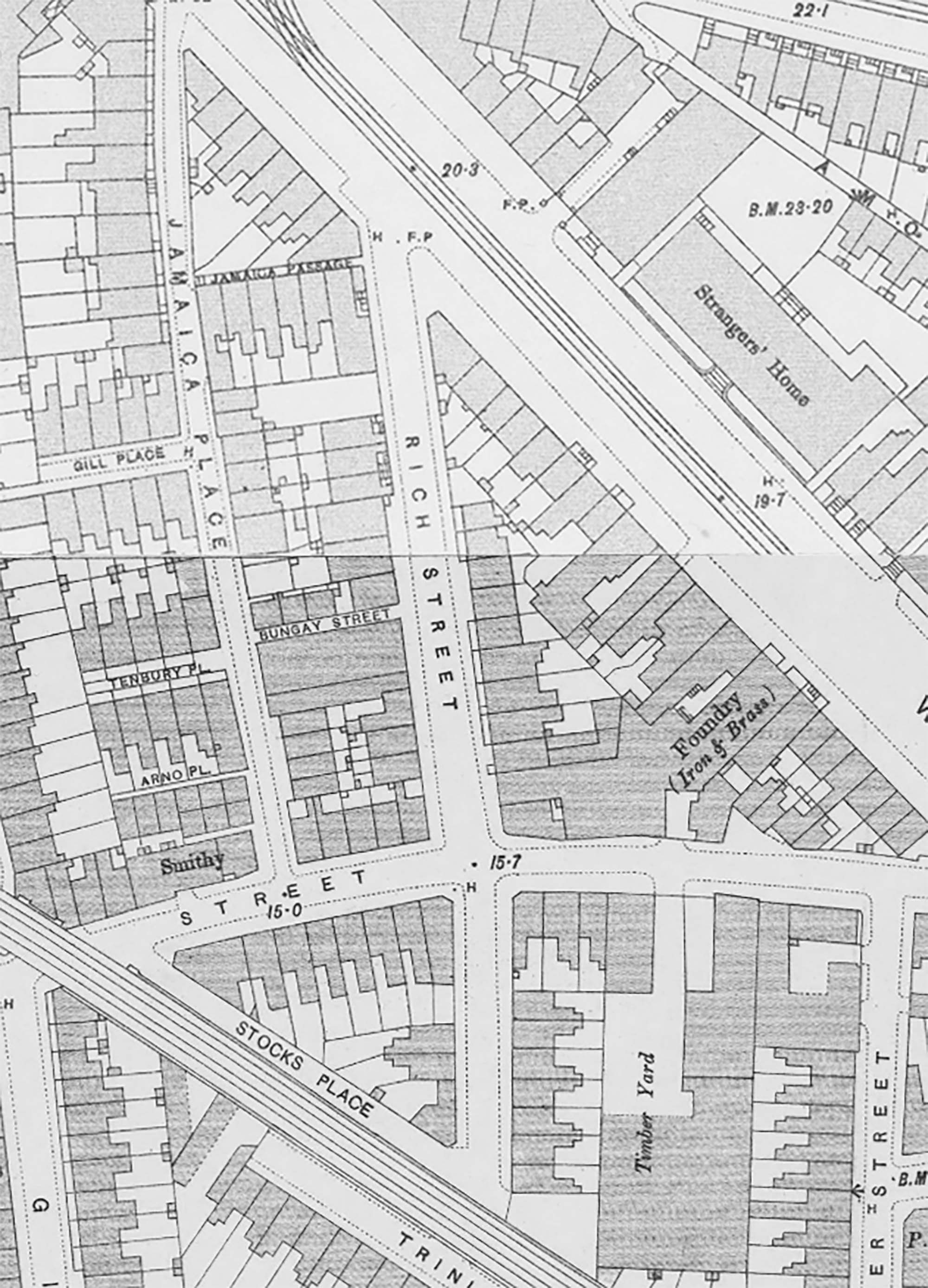
He said that he then began to get very ill and as he was gradually getting worse he told Lilian Hartney to go out to the pictures and to go out in the evening and added that she had gone out on a number of occasions, but that she was usually back by 10pm. He said that she had told him about the pictures that she had been to and that she had had a drink in the Star of the East and that she used to go to a cafe in West India Dock Road or Rich Street and have some Chop Suey.
Lilian Hartney's husband said that the night before she was murdered, Saturday 4 August 1945, Lilian Hartney was out all night. He said that she went out at about 7.30pm on 4 August 1945 and didn't return until about 10am on 5 August 1945. He said that she told him that she had slept in a shelter at the back of a hoarding locally but didn't say where. He said that he asked her why she had done that when she had a key to their door with her, but said that she evaded the question and didn't give him a satisfactory answer. He said that she just said that she had been out on the tiles.
He said that after that they went out together to the market place at Hessel Street and bought some food. He said that they then called at the Star in the East and had three half pints and then went back home at about 2pm. He said that Lilian Hartney then stayed in and cooked the dinner and that they were at home together until she went out at about 8pm as he had already said.
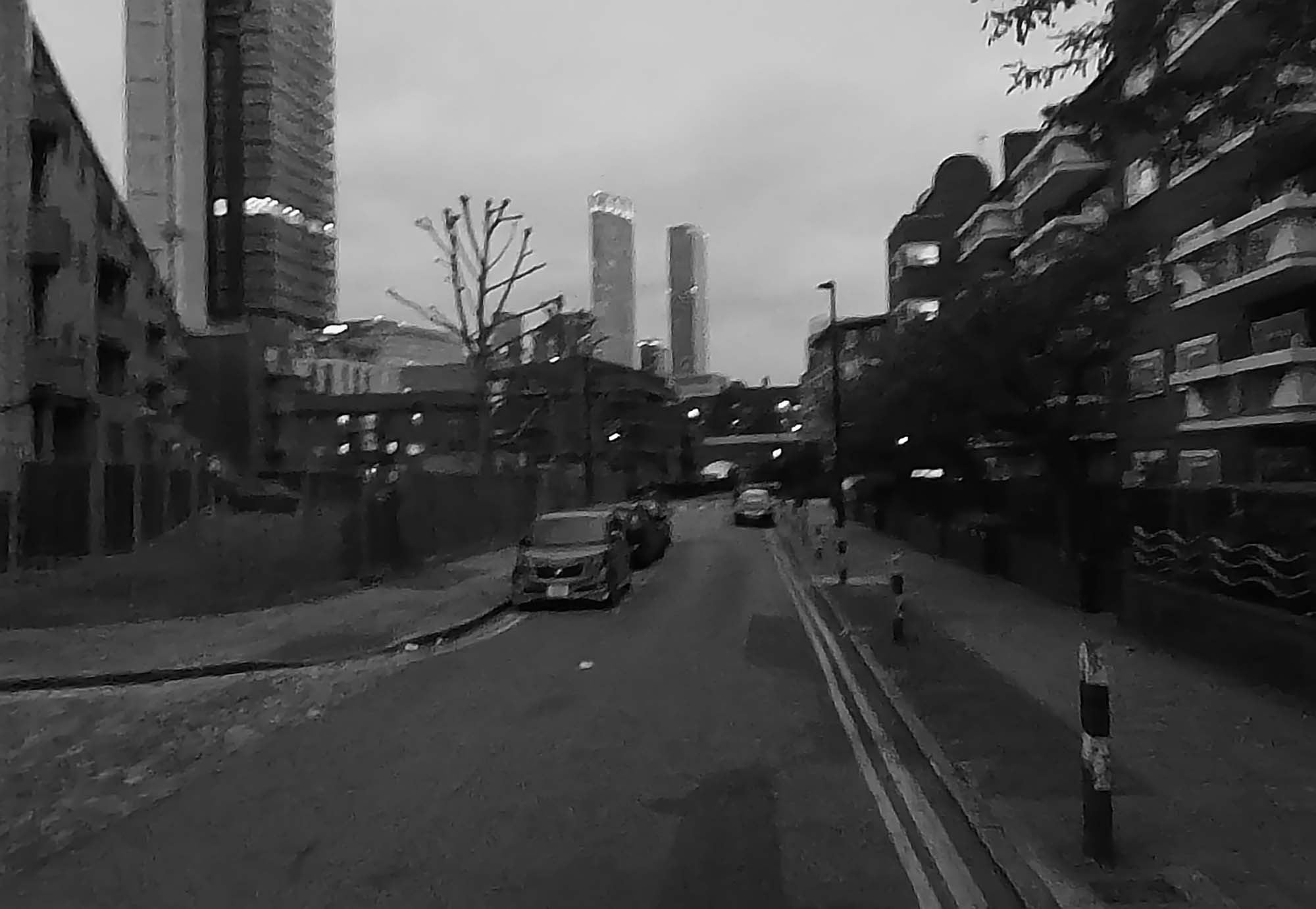
Lilian Hartney's husband said that Lilian Hartney gave her notice to leave Pearks Stores the previous week and said that she should have finished working there on the Saturday 12 August 1945. He added that he understood that she could not get on with the manager.
He said that when Lilian Hartney had gone out the night before, she had gone out in a bad temper because they had had a tiff which he said she created. He said that it was due to the fact that he was unable to have sexual connections with her in consequence of his health and said that she told him that he was no good to her. He said that the tiff was not a serious one and that they had never had a serious quarrel and that he had never assaulted her.
Lilian Hartney's husband added that Lilian Hartney had not complained to him at any time that any man or anybody else had been pestering her and said that as far as he knew she had no association with any man. He added that he had never seen the man that she had associated with in Chatham and that, so far as he was aware, Lilian Hartney had not seen him since she had left the Scientific Communications Company.
Lilian Hartney's husband said that he had been told that Lilian Hartney had met her death by violence at the hands of some other person and said that he didn't know any person who might have been responsible for her death. He said that when she last left he thought that she would have had about seven or eight shillings on her and added that they had one door key between them for the main door and that he had given it to her just before she left home. He said that it was an ordinary latch key and that it had a piece of string attached to it.
The Divisional Surgeon with K Division said that he arrived at Rich Street at 6am on 6 August 1945 and saw the body of Lilian Hartney. He said that she had marks of bruises and scratches on her neck and was lying on her back across the entrance to a yard, the gates of which were shut. He said that her clothes were turned up exposing the lower part of her body and legs and that she had no knickers on. He said that he thought that she had been dead for about six or seven hours because postmortem rigidity had started in the arms and neck, but had not descended to the lower limbs and also because of the presence of post mortem lividity. He added that under her clothing, the chest and upper parts of her body were still warm.
He said that there was no sign of a struggle and noted that her clothing had not been unduly disarranged except where her skirt had been turned up from below. He added that there were signs of strangulation and that he considered that her body had been there for six or seven hours.
A police inspector went to Rich Street at 5.45am on 6 August 1945 and saw the body of Lilian Hartney. He said that she was lying with her head towards West India Dock Road and her feet towards Grenade street. He said that the lower part of her body was unclothed and the front of her dress was folded back on to her stomach and that the back of her dress was just under her buttocks and that her legs were wide apart. He said that her head was turned slightly to the left and that her arms were stretched by her sides and that he noticed some small marks and indentations on her wrists.
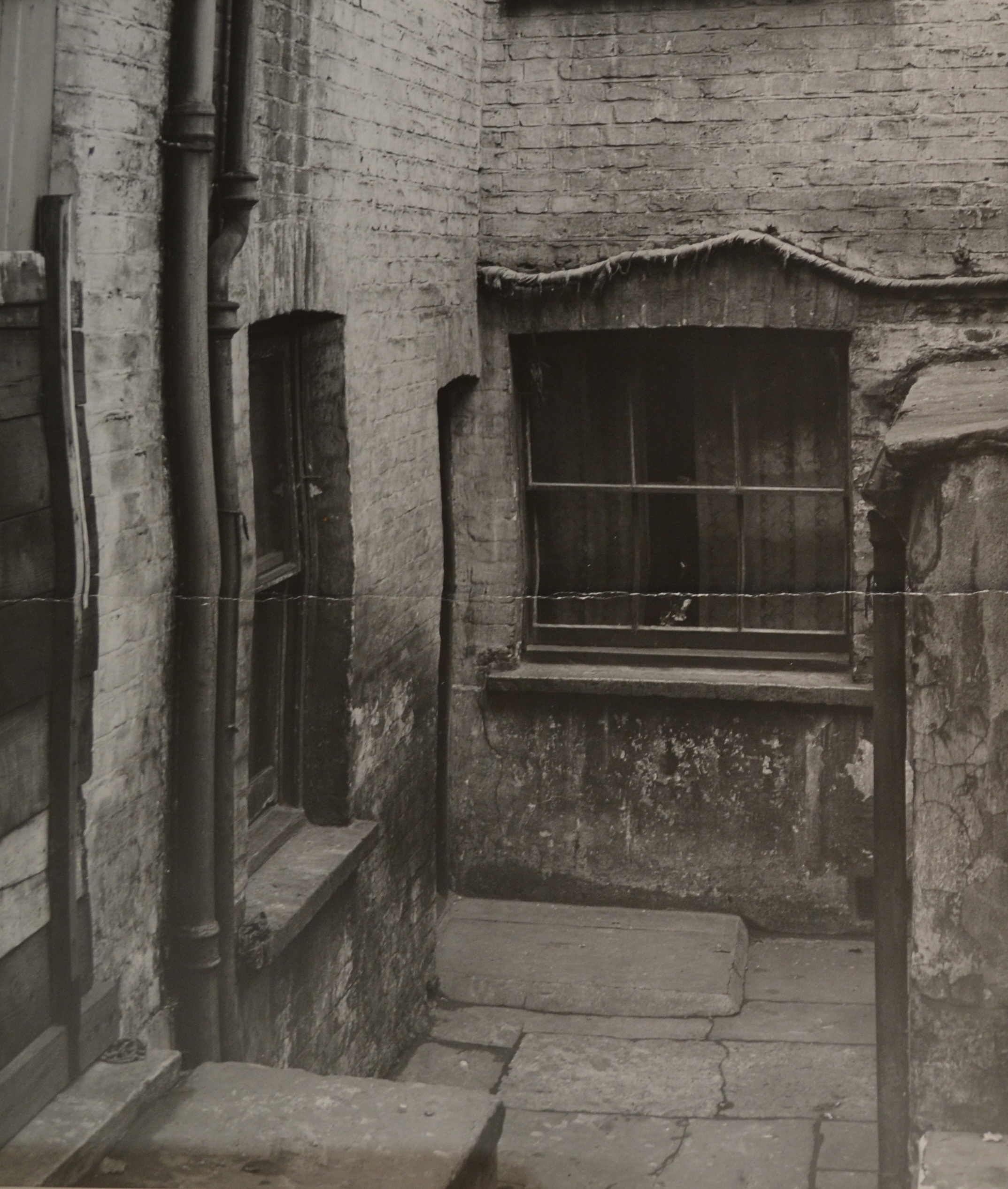
He said that there was a black handbag lying about a foot from the left side of her head and that it appeared as though her body had been deliberately arranged. He said that he looked at the ground near her body and saw that there were no signs of a struggle at that spot.
He said that after her body was identified he went to 32 East India Dock Road and knocked at the front door but got no answer. He said that he then went to the basement and roused the occupants of the basement flat and they let him in and that he then went from room to room until he reached the first-floor back room and knocked on it. He said that he then heard the sound of a man say, 'come in' and then went in to see Lilian Hartney's husband in a double bed behind the door on the side furthest from the wall. The inspector said, 'I am trying to get some information about Mrs Hartney, can you help' and said that Lilian Hartney's husband said, 'I am Mr Hartney'. The inspector said that he then asked where his wife was and said that Lilian Hartney's husband said, 'I don't know. She went out last night and has not come back yet'. The inspector said, 'You don't seem to be bothered about it, have you not done anything about it?', and Lilian Hartney's husband replied, 'No, she has done it before. She is rather highly strung and sometimes she gets bad tempered and goes off. I cannot do anything about it as I am ill and I have been in bed for nearly a week'.
The inspector said that Lilian Hartney's husband had the bedsheets round his shoulders and that he then asked him if he was fit enough to come out with him and said that Lilian Hartney's husband said 'yes' and through back the bed clothes. The inspector said that he then saw that Lilian Hartney's husband was dressed in his shirt, trousers, socks and braces and said that he said, 'That's a funny way to go to bed, isn't it? and said that Lilian Hartney's husband replied, 'I always go to bed like this as I find it helps me to sleep better. I don't sleep much as a rule'. The inspector said that Lilian Hartney's husband then started to put on his collar and tie and notice that his trousers were very well creased down the front and that that was the only crease in them. He added that whilst Lilian Hartney's husband was dressing that he was perspiring about his face and forehead and said, 'You're sweating a bit, what's the matter?' and said that Lilian Hartney's husband replied 'It's my complaint. It makes me do that. I am waiting to go to the hospital for TB'.
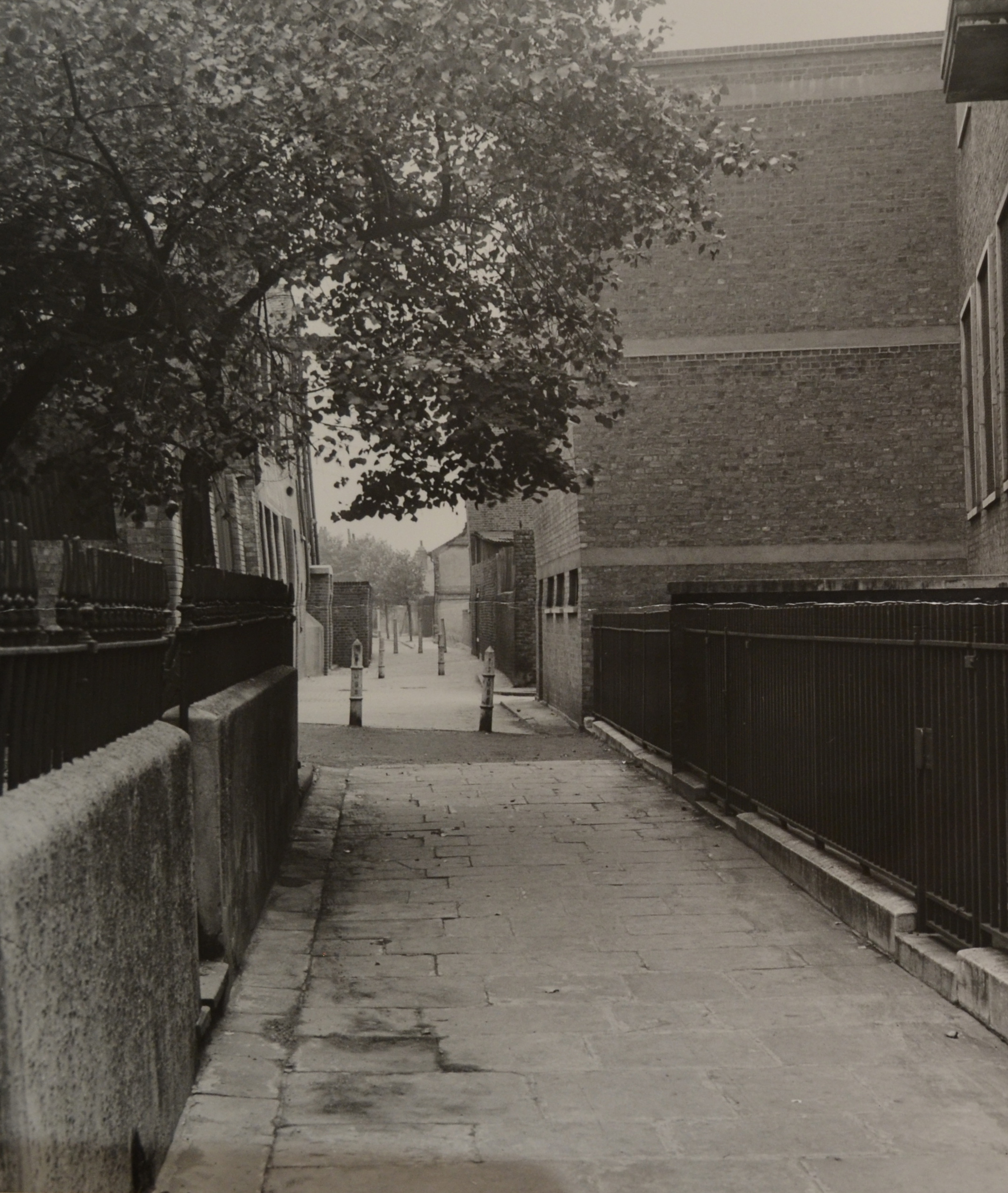
The inspector said that he then asked Lilian Hartney's husband when he last saw his wife and said that he replied, 'Last night about half past seven, I think . She went down to speak to the people below. She was rather a long time so I called out to her. She answered but didn't come up again'.
The inspector then said, 'Your wife has met with a rather nasty accident. Will you come with me?' and said that Lilian Hartney's husband asked 'What happened? Where have I got to go?'.
The inspector said that as they were leaving he asked Lilian Hartney's husband about his hat but said that he told him that he didn't wear one and that Lilian Hartney's husband then picked up a padlock to put in a hasp on the outside of the door and he said to Lilian Hartney's husband, 'Make sure you have a key with you', and said that Lilian Hartney's husband replied, 'I can get in all right and my wife has a key'.
The inspector noted that the room appeared orderly and that there were no signs of a struggle.
He said that they then went to East India Dock Road and Lilian Hartney's husband asked, 'Which way?' and he said, 'A woman whom I believe is your wife has been found murdered. I want you to come to make sure' and said that Lilian Hartney's husband replied, 'Yes'.
He said that they then went to Rich Street where the police had put up a tarpaulin across the entrance to obscure the body from public view and that that as they approached the opening from the north side he indicated to where Lilian Hartney was lying and said, 'In there'. He said that Lilian Hartney's husband stooped slightly and looked through the front and side railings and said, 'That's her'. The inspector said that at the time Lilian Hartney's husband was looking at the top of her head and that it was darkish. He said that it didn't seem as if he could have seen properly and that he was surprised at the casual observation and said, 'Don't you want a better look? You must make sure’, but said that Lilian Hartney's husband made no reply. The inspector said that he then took Lilian Hartney's husband to the south side of the entrance and said, 'Take a good look', but said that Lilian Hartney's husband made no request for the tarpaulin to be moved and so he lifted him up onto a low wall running at right angles to the higher wall and told him to take a good look.. He said that Lilian Hartney's husband then looked over the top of the wall and said, 'That's her'. He said that they then went to Limehouse Police Station.
A doctor later examined the contents of Lilian Hartney's stomach which he said was in an advanced state of digestion, except for the remains of some plums that were in a partial state of digestion. He said that the more advanced digested material was fish and bread. He said that the contents were compatible with having been consumed between three and five hours before her death. He added that there was no evidence of alcohol.
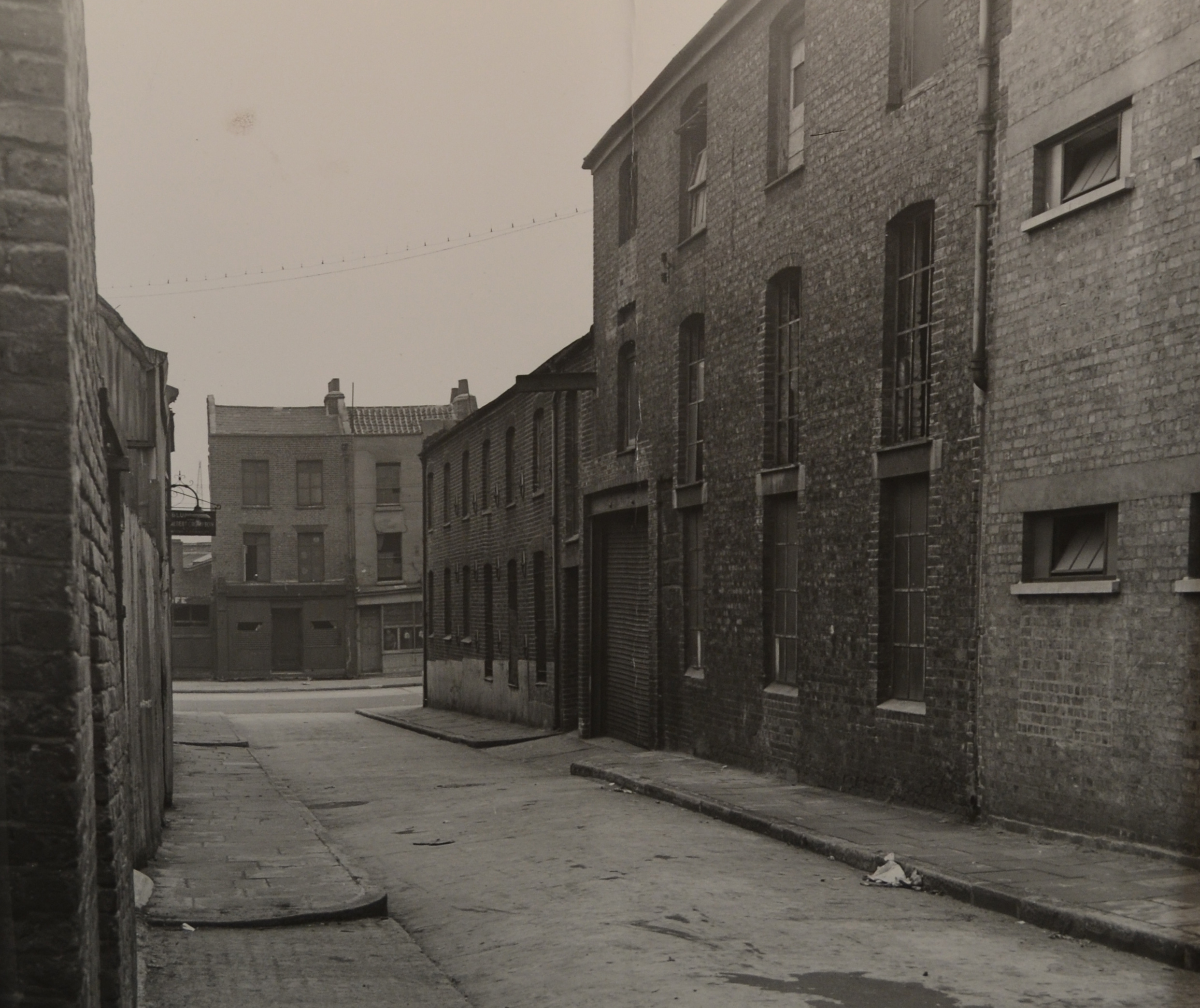
A doctor that carried out the post-mortem on Lilian Hartney at 11am on 6 August 1945 said that she was a well-nourished woman, about five feet six inches in height and that she had nail marks, scratches and abrasions on her throat. He said that there were bite marks around both of her nipples and pressure marks in keeping with her arms being tied akimbo by a stout cord on both forearms. He added that there were scratch marks on her forearms, hands and right thigh and that he thought she had been dead for between eight and twelve hours.
He added that internally there were numerous small haemorrhages on the surface of her heart, the right side of which was wildly dilated as well as numerous small haemorrhages on the surface of her lungs.
He also noted that her stomach contained a fairly large partially digested meal in which white fish and plums could be distinguished.
He added that there were no marks of violence in or around her vagina and that there was no evidence of recent intercourse.
He also said that her bladder was empty which he said was not uncommon in cases of asphyxiation.
He gave her cause of death as being due to asphyxia due to manual strangulation.
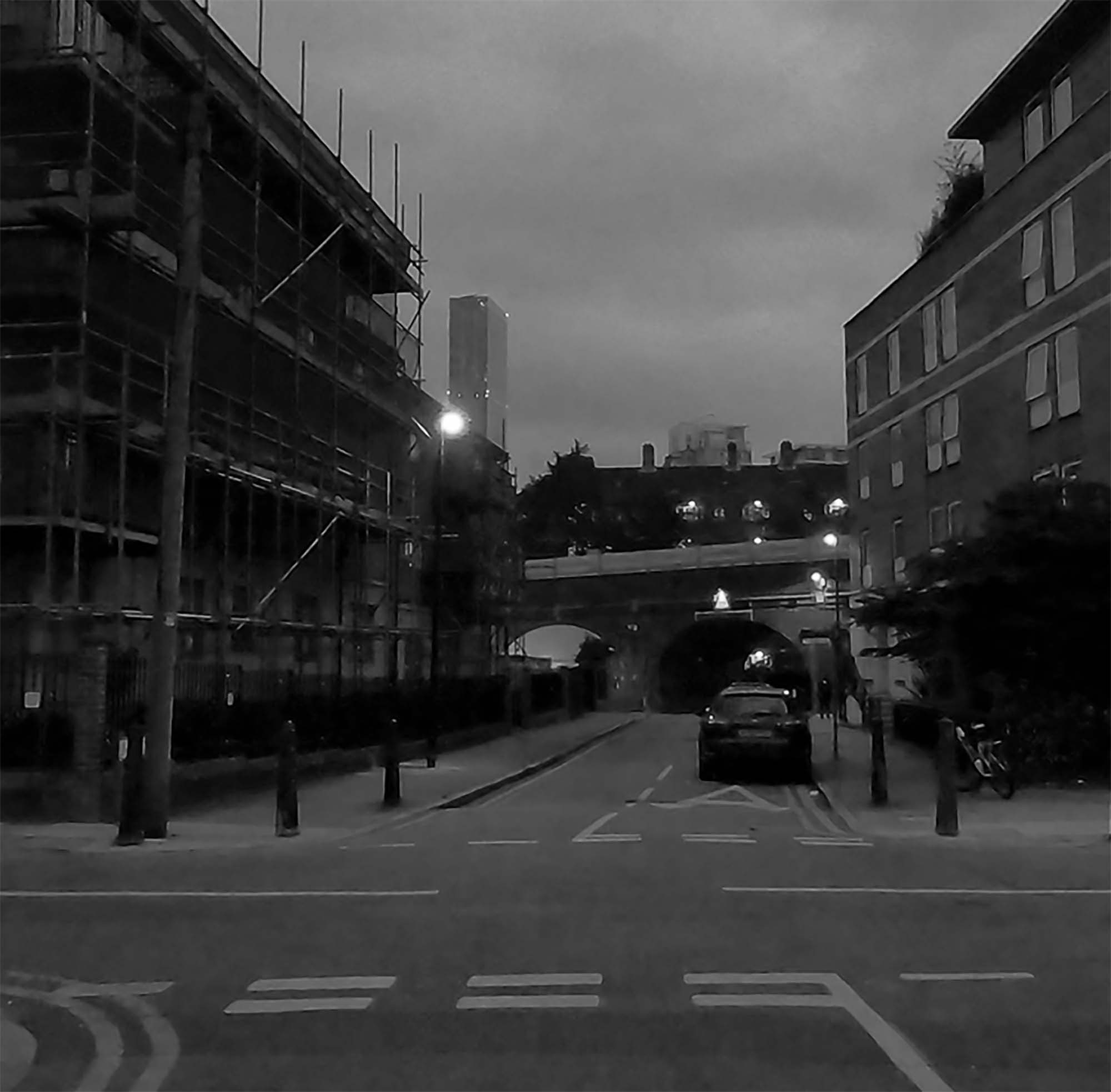
The doctor said that when he examined the marks on her arms he determined that they had all been caused at the same time, as had the bite marks. He said that there were abrasions in the cord marks that suggested that the cords had been in direct contact with her skin and that the size of the cord was approximately one-eighth of an inch. He said that he fitted a similar cord and found that the pressure marks corresponded exactly. He noted that round the pressure marks there were weal’s and said that he thought that the scratch marks on her arms had been made by Lilian Hartney's own fingers in an attempt to free herself.
The doctor said that he thought that an initial attempt to strangle her had been unsuccessful but that she had eventually been manually strangled.
He noted that bruising round her left kidney could have been caused by pressure from her assailants knee and the fact that there were no counter pressure marks on her buttocks, shoulders or back of the head indicated that she had not been lying on a hard surface at the time, but on a resilient structure such as a bed or sofa when that injury was inflicted.
He concluded that he thought that her death had taken place between 11pm on the night of 5 August and 3am on 6 August 1945. He added that her meal had not been taken more than five hours before death and was probably taken two or three hours before death.
He added that he could find no indication that her body had been dragged or pulled along.
The doctor added that the bite marks around Lilian Hartney's right nipple were somewhat confused suggesting that two bites had been made. He then said that the bite marks to her left nipple were unusual in that the teeth marks were only above the nipple, suggesting that the dentition in the front of one or other jaw of the assailant was deficient.
He noted that all the marks on her body were caused shortly before her death.
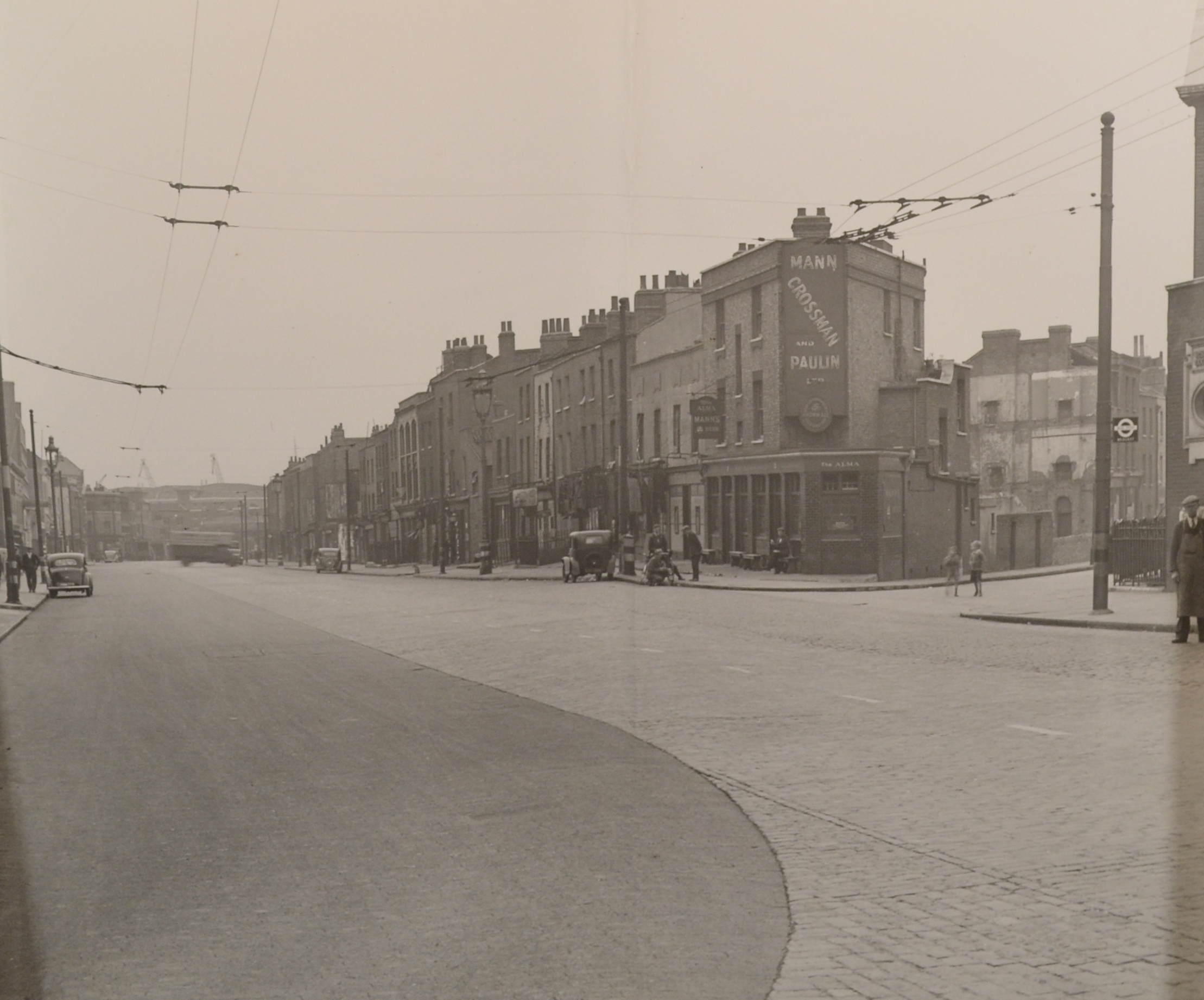
The police said that when they first saw Lilian Hartney's husband at Limehouse Police Station and asked him to give information about his wife at about 7.30am on 6 August 1945, he had been perspiring freely through the interview as well as on the walk back home which he had done unassisted. The police said that when they went back to 32 East India Dock Road at 2.30pm on 6 August 1945 and asked him to go back to the police station, he again walked unassisted but was not perspiring. It was noted that at that time there was no suspicion against him.
Later at the police station on 6 August 1945, at about 8.30pm Lilian Hartney's husband was talking about Lilian Hartney and said, 'We were all right when I was fit', and when he was asked what he meant, he said, ''She told me last Saturday night I was no good to her'. When he was asked what that meant, he said, 'She wanted a man every night. She liked you to lay on top of her for half an hour after you had finished and bite her breasts and neck. I could not do it with my complaint. That is why she used to be fed up with me'.
The police said that as part of their investigation they searched every air raid shelter in a three quarter mile radius of where Lilian Hartney's body was found and said that in none of them could they find any signs of a struggle.
A woman who lived in the room below Lilian Hartney and her husband at 32 East India Dock Road said that she could generally hear them talking and that once or twice she had heard them quarrelling. She said that on 5 August she and her husband got in just after 9pm noting that she heard no noises at that time from upstairs and that they went to bed at 10pm and she slept until 11pm when she was woken up by the sounds of a scuffling in the passage way between midnight and dawn and woke her husband up. She said that she then went back to sleep but woke again about two or three minutes later when she heard noises in the back yard, saying that it sounded like the lid of a dustbin falling down the back yard and woke her husband again to tell him. She said that the dustbins were at the back of the yard by Amoy Place.
She said that when she saw Lilian Hartney's husband the following day after he got back from the police station he said to her, 'I'm innocent. The police have nothing on me'.
When the police searched the room that Lilian Hartney and her husband shared they found that the bedsheet was stained and said that Lilian Hartney's husband said, 'My wife wetted the bed'. However, when the police turned over the mattress, they found another wet stain. It was almost in the centre of the bed, but slightly closer to the side nearest the wall. It was noted as being very damp and to smell of urine. When the police pointed it out Lilian Hartney's husband said nothing and when the police said, 'You say your wife wet the bed. When was the last time?', he said 'It was not last night, because she was not at home. It was not Saturday night because she was out all night'. When it was again pointed out that the mattress as damp, he made no further reply.
They also found some partially burnt string in the fireplace.
String was also found in the room which was found to fit the marks in Lilian Hartney's wrists.
The police also found a number of detective novels on the table in the room.
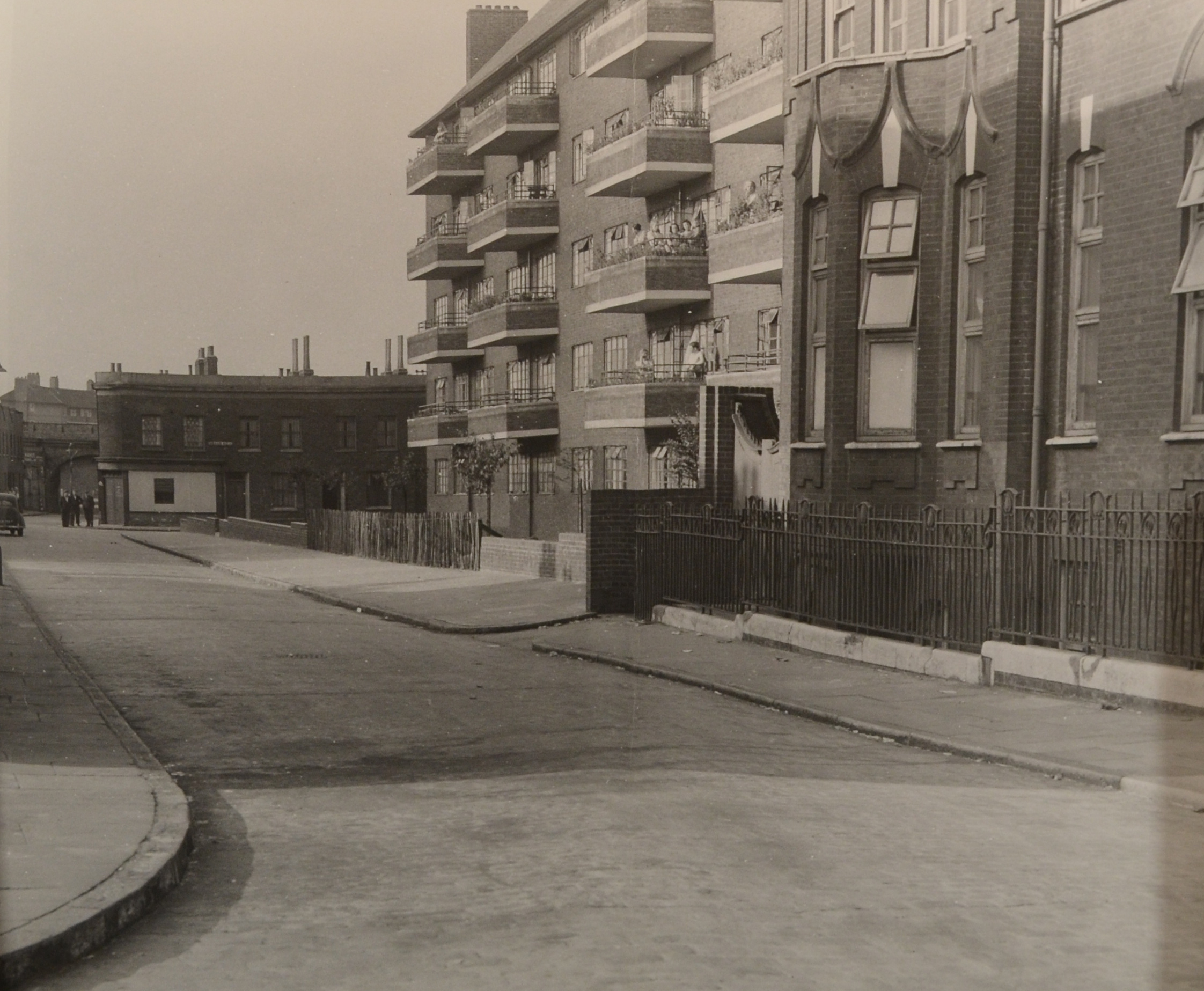
The police also noticed some food on the table including a basin of stewed plums with a rim about a quarter of an inch suggesting that some had been used.
When Lilian Hartney's husband was asked when Lilian Hartney had her last meal he said, 'About 6 o'clock Sunday evening. She had fish and plums'.
When Lilian Hartney's husband first went to the police station to make a statement the police said that they noticed that he had two teeth missing from the front lower jaw and that he had two dentures in his upper jaw.
When the police examine his hands, they found that they were very clean and that his hands and nails appeared to have been scraped and recently brushed out.
The police added that whilst they were examining the room, Lilian Hartney's husband kept talking to them, and that they made notes of some of the things that he had said. They said that he said, 'Have you been round to that Chinese Restaurant near where she was found, I know she used to go in there. Perhaps you will find she was in there last night and you may find she was with a man. Its funny she was found near there wasn't it. You see, sir, she was always telling me I was no good to her. I hate to tell you but she was over-sexed. I am ill and too old now, you see, and she wanted me to mess her breasts about and play about but I would not and she used to throw it up in my face that I was no good to her. You can see by the state of this room how she behaved, and not looked after me. Last night she was out all night and she told me she had been out on the tiles. Lately I cannot seem to have done much with her. Now I have been ill she has been going out leaving me alone'.
When the police went to see Lilian Hartney's husband on 18 August at St Andrews Hospital in Bow where he was a patient, he greeted them by saying, 'Any developments, Sir?'. He then continued by saying, 'I did not murder my wife. I did not kill her. We bought some fish and plums and she cooked them but got up from dinner and went on the bed and would not even clear up the table. She would not do a thing for me. If they say they heard screams in the house that night it is lies because she did not come home that night'.
Lilian Hartney's husband was brought back to Limehouse Police Station on 4 December 1945 where he was cautioned and made another statement which was mostly consistent with the first statement he made on 6 August 1945.
A while later, whilst he was in the lavatory, he said to a policeman, 'Is he going to charge me with murder?'. He also said, 'He won't trip me up as I remember what I said in my last statement'.
When he was charged with murder, Lilian Hartney's husband said, 'I strenuously deny murdering my wife. I reserve my defence'. When he was asked whether he desired to call any witnesses, or give evidence on his own behalf, he said, 'I reserve my defence and call no witnesses at this court'.
At his trial, the prosecution asked whether it was beyond reasonable possibility that what Lilian Hartney's husband said was true and that the taunting of Lilian Hartney, an oversexed young woman, when he could not satisfy her, at last became more than he could bear, and that finally, in their room in the quiet of the night, whilst laying there on the bed that Lilian Hartney's husband had attempted to satisfy her desires, noted by the teeth marks, that he had then strangled her?
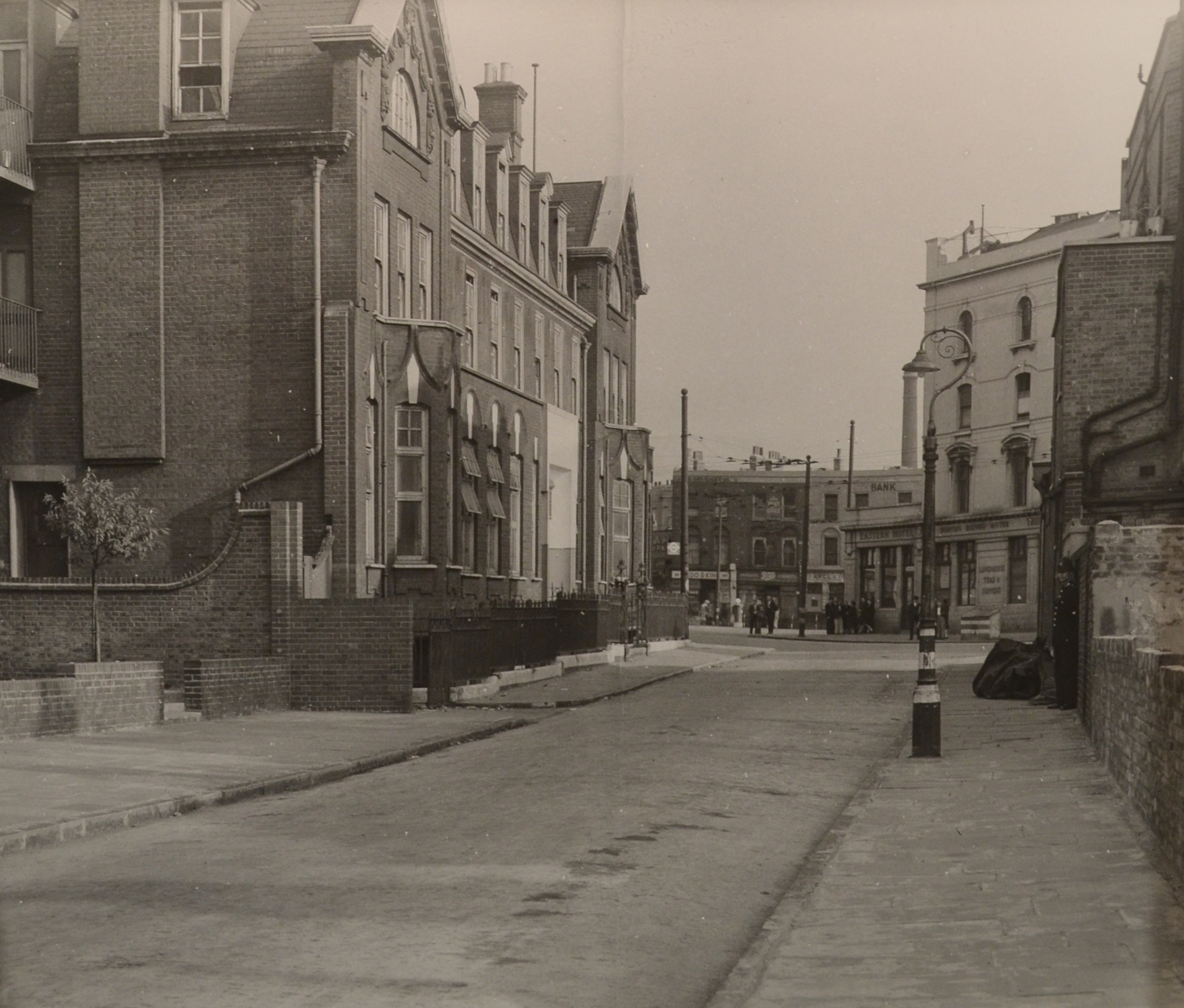
The prosecution said that Lilian Hartney had come back from the concert and didn't stay out all night as her husband had said and that after she returned and went to bed he strangled her which had caused her to wet the bed. It was also noted that no urine was found where her body was found, or on her clothing, which she was supposed to have been wearing when she was strangled.
The defence noted that if Lilian Hartney's husband had killed Lilian Hartney in their room that if he had managed to carry her from their house to Rich Street, a distance of 250 yards without being seen by anyone, even though it was late and the streets were deserted and were unfrequented, that it was nonetheless a remarkable performance on his part.
It was also asked why he would have carried her body so far when he could have put her in one of the nearby air raid shelters.
Also, though it was acknowledged that Lilian Hartney's husband was unwell, it was further noted that he had previously worked as a mail porter and was used to carrying weights and physical exertion which was further noted as evidenced by his demeanour in the witness box throughout the trial.
The prosecution also noted that the marks on Lilian Hartney's nipples were caused by a person deficient in teeth in the lower jaw, as was her husbands.
When the prosecution demonstrated that the string found in the room was a perfect fit for the marks in Lilian Hartney's wrists, the defence were described to have demolished that argument by demonstrating that so was other similar string obtainable in the neighbourhood.
However, the jury found the husband not guilty.
It was noted that Lilian Hartneys mother didn't last the trial.
see discovery.nationalarchives.co.uk
see National Archives - DPP 2/1452, CRIM 1/1754, MEPO 3/2303
see Daily Mirror - Wednesday 05 December 1945
see Daily Herald - Wednesday 08 August 1945
see Western Daily Press - Wednesday 05 December 1945
see Dundee Evening Telegraph - Saturday 16 February 1946